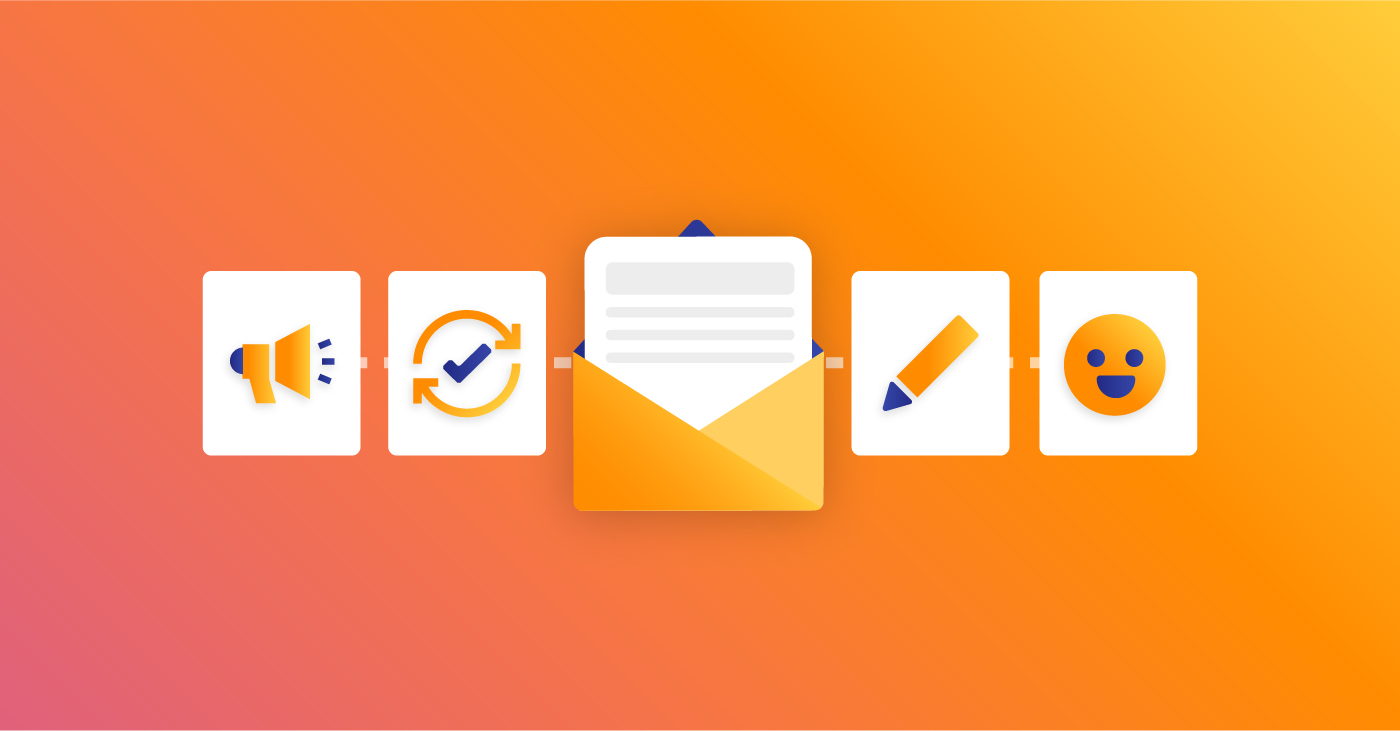
The email newsletter stands as a resilient and adaptive medium, continually shaping itself to meet the dynamic needs of an ever-connected world. From its humble beginnings as simple text-based updates to today’s interactive, multimedia-rich publications, the email newsletter has transformed into a sophisticated tool for engagement, information dissemination, and brand communication.
As we embark on a journey through the evolution of the email newsletter, we unravel its rich history and the pivotal role it has played in connecting individuals, businesses, and communities. Join us as we delve into the past, explore the present, and peer into the promising future of this enduring form of digital communication. In this article, we’ll unravel the threads of innovation and adaptation that have woven the email newsletter into the fabric of our digital lives and discover how it continues to shape our world today.
The Importance of How the Email Newsletter Has Evolved
Understanding the evolution of the email newsletter is important for several reasons:
- Historical Context: Knowledge of the email newsletter’s history provides valuable context for appreciating its current significance. By tracing its evolution, we gain insights into how communication methods have transformed over time, reflecting the changing needs and technologies of society.
- Adaptation and Innovation: The email newsletter’s evolution showcases how it has adapted to the rapidly changing digital landscape. Marketers, businesses, and content creators can draw inspiration from past developments to innovate and stay relevant in today’s competitive email marketing environment.
- Effective Communication: Learning from the past can help email marketers and communicators craft more effective newsletters. Understanding which design elements, content types, and strategies have historically resonated with audiences can guide the creation of engaging and impactful newsletters.
- Technological Advancements: The evolution of email newsletters is intertwined with advances in email technology and design capabilities. Staying informed about these advancements is crucial for optimizing the technical aspects of email marketing campaigns.
- Audience Expectations: As the email newsletter has evolved, so too have audience expectations. Subscribers now expect more personalized, relevant, and visually appealing content. Being aware of these expectations can help marketers meet them and deliver a better subscriber experience.
- Regulatory Compliance: Email marketing is subject to various regulations, such as the CAN-SPAM Act and GDPR. Understanding the historical context of email marketing and how it has adapted to these regulations is essential for compliance and avoiding potential legal issues.
- Future Trends: Examining the trajectory of the email newsletter can provide insights into future trends and opportunities in email marketing. Anticipating how the medium might continue to evolve allows marketers to stay ahead of the curve and adapt their strategies accordingly.
- Cultural and Social Impact: The email newsletter has had a profound cultural and social impact, influencing the way we consume news, connect with communities, and engage with brands. Understanding this impact can shed light on broader trends in digital communication and consumer behavior.
The Email Newsletter: Past and Present
Text-Only Newsletters (1990s)
In the early days of email, newsletters were primarily text-based and resembled traditional printed newsletters. They often contained basic updates and information.
HTML Newsletters (Late 1990s – Early 2000s)
As HTML email capabilities grew, newsletters became more visually appealing with the inclusion of images, links, and basic formatting.
Personalization and Segmentation (Mid-2000s)
Email marketing platforms started offering personalization and segmentation options. This allowed marketers to send more targeted content based on subscribers’ preferences and behaviors.
Responsive Design (2010s)
With the rise of mobile devices, responsive design became crucial. Newsletters were designed to adapt to various screen sizes, ensuring readability on smartphones and tablets.
Interactive Content (2010s)
Interactive elements, such as embedded videos, surveys, and polls, began appearing in newsletters, enhancing subscriber engagement.
Automation and Drip Campaigns (2010s)
Email marketing automation tools enabled the creation of drip campaigns, where a series of emails could be automatically sent based on subscriber actions or triggers.
AI and Personalization (2010s – Present)
Artificial intelligence and machine learning are increasingly used to personalize content further, predict subscriber behavior, and optimize send times.
Compliance and Privacy (2010s – Present)
Stricter data protection laws, such as GDPR and CCPA, forced marketers to prioritize subscriber consent, data security, and transparency in email newsletters.
Accessibility (2020s – Present)
Greater attention is given to making email newsletters accessible to all, including those with disabilities, by adhering to accessibility standards.
Content Quality and Value (Ongoing)
Today, successful email newsletters prioritize delivering high-quality, valuable content that resonates with subscribers, building trust and loyalty.
Integration with Other Channels (Ongoing)
Email newsletters are often integrated with social media, websites, and other marketing channels to create a cohesive brand experience.
AI-Driven Personalization and Predictive Analytics (Ongoing)
AI continues to evolve, enabling even more advanced personalization and predictive analytics in email marketing, making newsletters more relevant to individual subscribers.
Where is Email Marketing Headed?
Email marketing is headed toward a future marked by greater personalization, automation, and enhanced engagement. As technology evolves, marketers will harness the power of AI and machine learning to create hyper-targeted, contextually relevant email campaigns. Subscribers can expect more tailored content, product recommendations, and timing that aligns with their preferences and behaviors. Privacy and data protection will continue to be paramount, with stricter regulations shaping how email marketers collect and utilize subscriber data. Moreover, the integration of email marketing with other digital channels and platforms will foster seamless, omnichannel customer experiences. In this dynamic landscape, the key to success will be striking a balance between data-driven precision and authentic, value-driven communication, ensuring that email remains a potent tool for building relationships and driving results in the years ahead.



